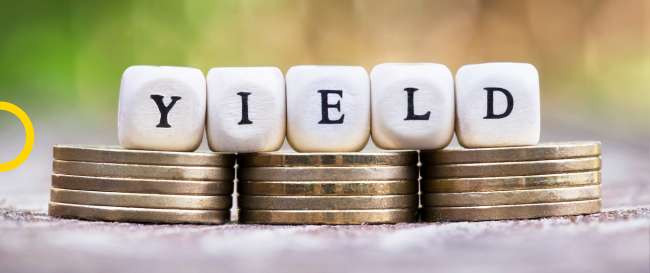Bonds are a common form of investment, and the prices of these bonds are impacted by numerous factors, including interest rates. When it comes to the world of finance, it is essential to understand how interest rates affect bond prices since it plays a key role in the financial system. In this article, we will first look at how bonds work and then explore the relationship between interest rates and bond prices and what it means for investors.
When a bond is issued, it typically has a face value, which is the amount of money that the bond issuer promises to pay back to the bondholder at maturity. The bond also has a coupon rate, which is the annual interest rate that the issuer will pay the bondholder on the face value of the bond to compensate them for loaning the money for the period as well as to compensate them for the risk taken.
Yield to maturity (YTM) is an important concept when discussing the valuation of bonds as it is the rate of return investors can expect to receive from the bond, assuming that all coupon payments are reinvested at the same rate, if it is held until its maturity date.
The YTM is expressed as an annual percentage rate and is used to compare the expected returns of different bonds with different coupon rates, maturities, and market prices.
YTM considers not only the annual coupon payments but also the price of the bond should it be traded in the secondary market, which may differ from its face value due to many factors including changes to the market interest rate.
If market interest rates rise after a bond has been issued, the bond’s fixed coupon rate becomes less attractive to investors, because they can earn a higher rate of return by investing in other bonds that offer higher interest rates.
As a result, should the bond holder want to sell their bond in the secondary market, their bond’s price will fall, because other investors are willing to pay less for a fixed income stream that is less valuable in a rising interest rate environment.
Let us consider an example to understand this relationship better. Suppose you invest in a bond that pays a fixed interest rate of 3%. Six months later new bonds are issued, with the same maturity as the bond you hold, and by the same bond issuer, except the new bonds offer an interest rate to 4% because the market interest rate increased during this six-month period. In this scenario, your bond’s interest rate is lower than the current market rate, making it less attractive to investors in the secondary market.
To compensate for your bond’s lower interest rate, you can sell your bond in the secondary market at a lower price. The price reduction increases the bond’s YTM, making it more attractive to other investors.
On the other hand, if interest rates fall, the price of a bond increases. For example, if you invest in a bond that pays a fixed interest rate of 3%, and the current market interest rate for similar bonds decreases to 2%, your bond’s interest rate is higher than the current market rate, making it more attractive to investors. As a result, the demand for the bond increases, causing its price to rise.
Another important concept to understand when discussing the relationship between interest rates and bonds is duration, which measures the sensitivity of a bond’s price to changes in interest rates. Duration is a calculation that considers the bond’s maturity, coupon rate, and yield to maturity.
It is a useful tool for investors who want to understand how changes in interest rates can impact their bond investments. Duration is typically expressed in years and represents the weighted average time until the bond’s cash flows are received.
It is clear that bonds and interest rates are intricately linked and that changing interest rates directly affects bond prices. Next time the Reserve Bank changes interest rates you will better understand the impact this will have not only on the repayments of your debt but also on your investments.









1 Comment
Hey there! This is my first comment here so I just wanted to give a quick shout oout aand say
I really enjoy reading through your articles. Can yyou recommend any
other blogs/websites/forums that goo over the same subjects?
Thanks a ton! https://www.waste-ndc.pro/community/profile/tressa79906983/